What Exactly Is a Pollen Allergy?
By Kristen Stewart
Many people welcome spring with its warmer weather, longer days, and blossoming flowers and trees. For the more than 26 million Americans who suffer from allergic rhinitis including pollen allergies, however, this season can be full of misery.1
What Is Pollen?
Pollen is a very fine powdery substance that’s usually yellow in color. It’s generated in a structure on the end of the stamen (the male reproductive part of the flower) known as the anther and its purpose is to fertilize other plants in the same species. In order for pollination to occur, pollen grains must be transferred from the anther to the female stigma of another plant. This process creates seeds with genetic information for new vegetation.2
Pollen falls and spreads mostly in the spring, summer, and fall. You may have noticed this powdery, yellow substance coating your car. The main culprits tend to be grasses, trees, and weeds, which have pollen that is small, light, and dry and therefore easily dispersed by the wind. By contrast, plants with brightly colored flowers (such as roses) have large, waxy pollen that’s transported between plants by bees and other pollinating insects.3 4
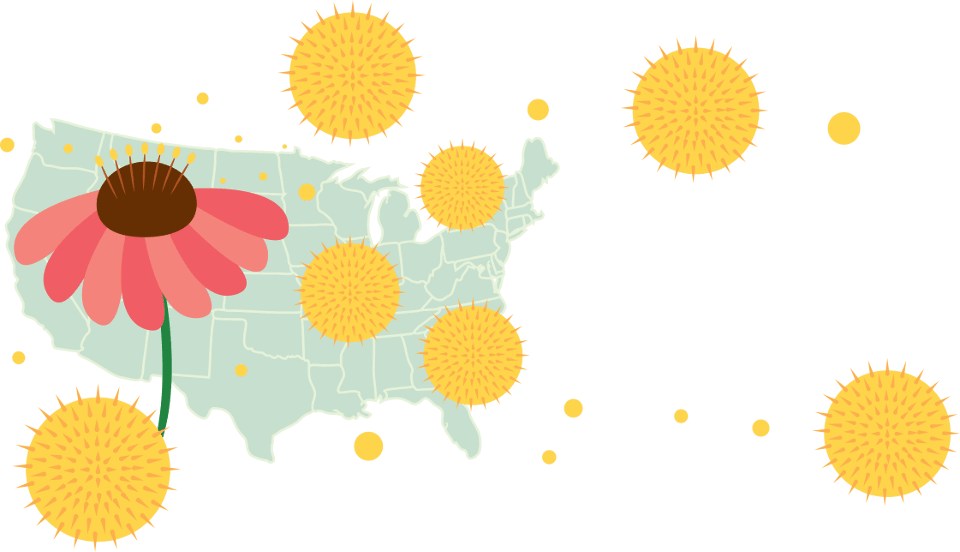
Some of the most commons sources of pollen in the United States are:
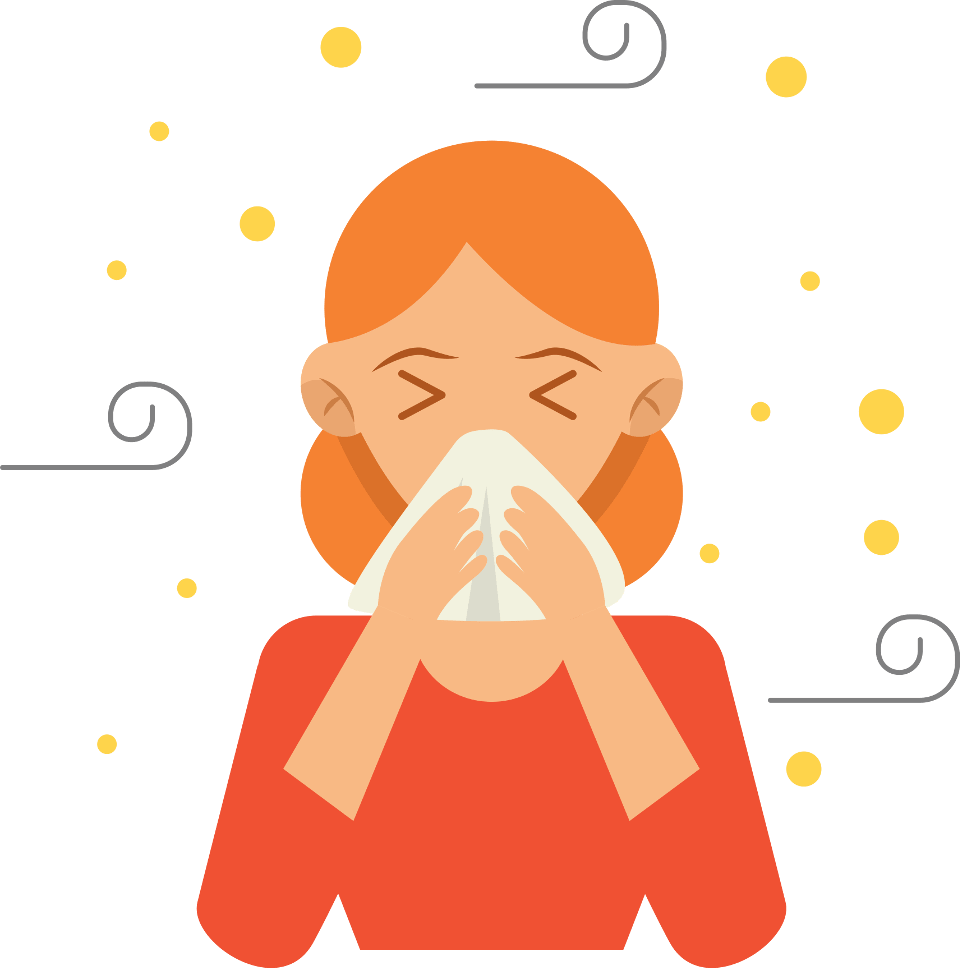

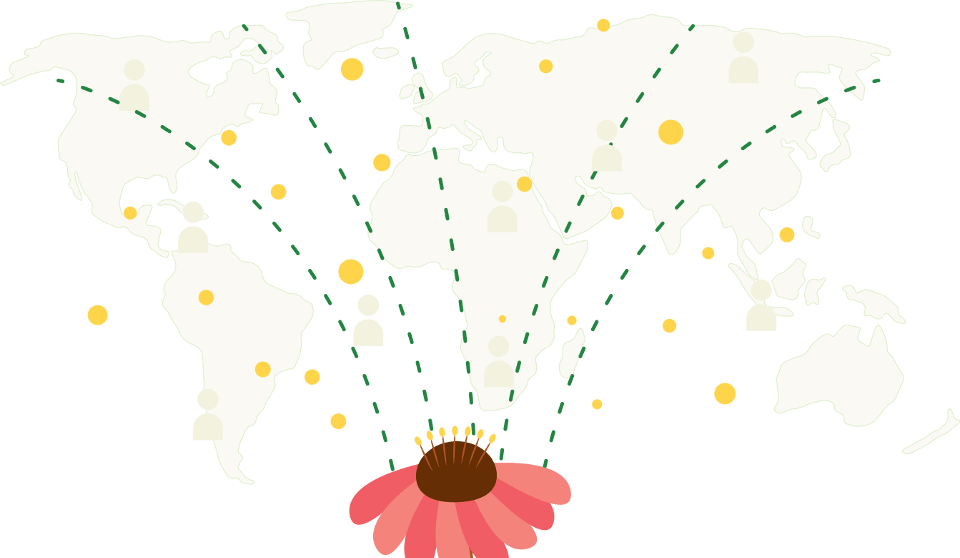
Symptoms of a Pollen Allergy
Allergies occur when harmless water-soluble proteins released by pollen enter the mucous membranes of the eyes, nose, and mouth. If you’re susceptible to allergies, your immune system mistakes pollen for invading germs. Your body triggers a complex process whereby it generates chemicals such as histamine to irritate the nerves, which leads to itching and sneezing in an attempt to expel the pollen.5 6
Symptoms of a pollen allergy vary from person to person. You may experience bouts of sneezing. This seemingly annoying reaction helps physically expel the pollen from your system, and it also serves as a red flag to tell you there is a high pollen count and you should leave the area if possible.7 In conjunction with sneezing, you may experience additional issues with your nose and eyes. To learn more about these symptoms, visit our Understanding Allergy Symptoms page.8
Susceptibility to a Pollen Allergy
Many people wonder if pollen allergies are genetic. Researchers are still studying this question, but studies suggest that yes, a hereditary component is involved. Having a blood relative with allergies or asthma increases your risk of having one or more allergies — though the specific type is not passed down, just the increased odds. To complicate the matter more, prolonged exposure to the allergen also plays a role in whether or not you develop allergies. Even if you have a genetic susceptibility, you may not develop a problem if you mostly avoid the allergen. Having asthma, atopic dermatitis, and/or allergies to other triggers can also increase your risk.9
If you’ve made it into your 20s, 30s, or 40s without allergies, you may wonder if you’re home free. Not necessarily. It is possible for adults to develop allergies to pollen and other triggers even into middle age. In general, the number of individuals suffering from hay fever is increasing in both the United States and around the world.10
Experts aren't sure why numbers are rising but speculate more airborne pollutants and dust mite populations coupled with less ventilation in our homes and workplaces could play a role. Unhealthy habits including poor diet and not enough exercise may also contribute. The hygiene hypothesis — the idea that we live and eat in a relatively sanitary environment, so our immune systems don't have enough work to do and instead overreact to allergens — is another possibility. Other theories include finally reaching an exposure threshold for an allergy to develop, living in a new area with different trees, plants, and grasses, or adopting a pet.11
Once you reach middle age, however, your chance of developing allergies to pollen decreases. The immune system weakens as you grow older, so it’s less likely for it to experience a hyper-allergic reaction.12
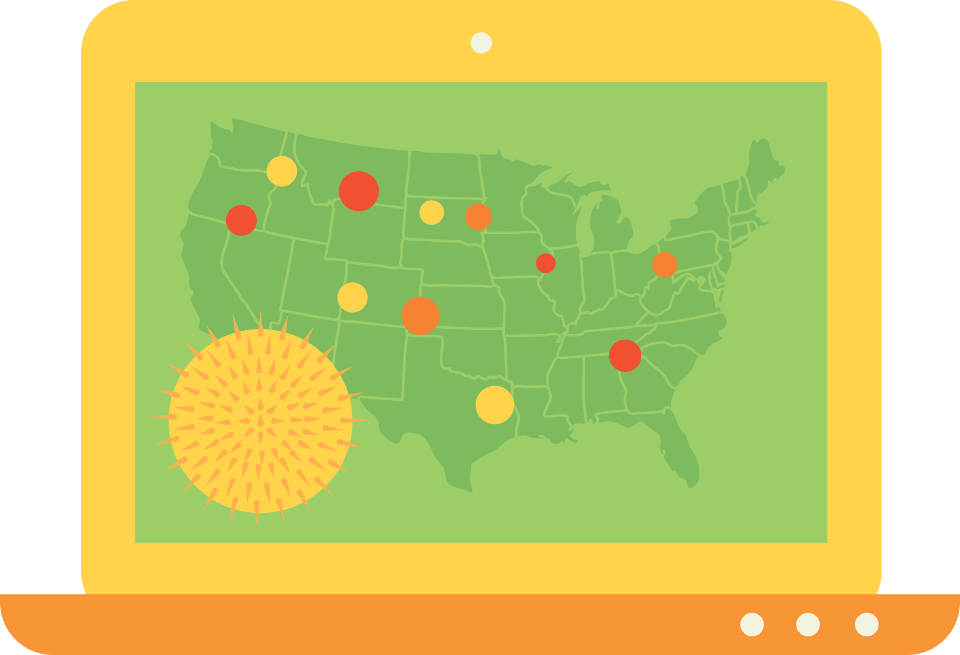
Check the pollen forecast
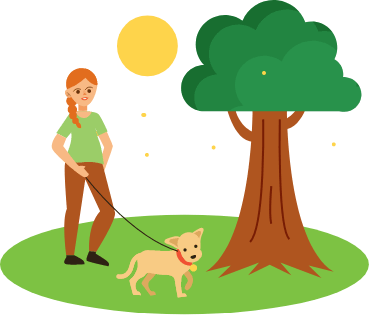
Plan your time outdoors
- If possible, go outside when pollen counts are lowest.
- Dry, windy, and hot days can trigger pollen allergy symptoms most.
- Pollen counts are typically lowest before dawn, rise throughout the morning, peak around the middle of the day, and decline in the early evening.
Avoid unnecessary exposure
- Closing all doors and windows
Choose your outdoor greenery wisely
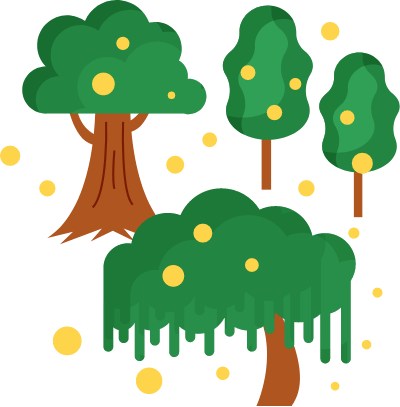
- Trees produce pollen earliest in the season. Common culprits include:
- Poplar
- Willow
- Cottonwood
- Try to identify which trees trigger symptoms and consider replacing them with a different type.
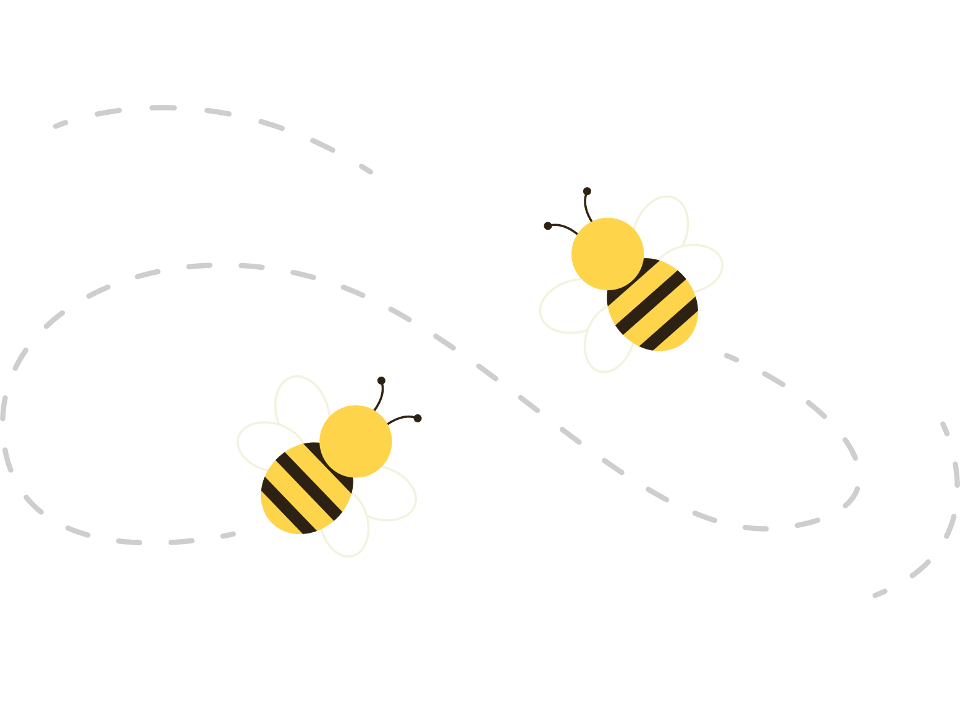
- Populate your garden with trees and plants fertilized by insects, such as pear and cherry trees and roses.
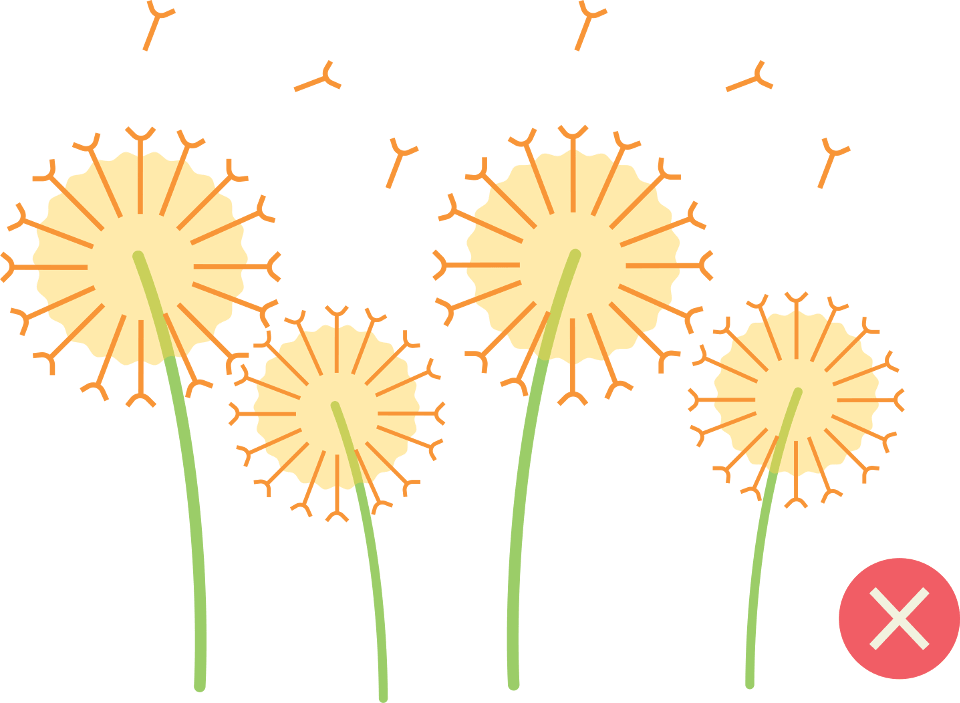
- Keep up with weeding and brush removal and use rocks or plastic gravel to prevent weeds from growing.
Treatment of Pollen Allergies
The good news? There are many ways you can manage and treat pollen allergies.
Check the pollen forecast
While you can try to guess how heavy the pollen is falling from the weather and time of day, you can also turn to the internet to help determine the pollen forecast. Check out our allergy tracker tool and app for a local allergy forecast.
Plan your time outdoors
One of the best ways to manage a pollen allergy is to avoid exposure to pollen as much as possible and go outside when pollen counts are lowest.
All allergy sufferers know the amount of pollen falling varies by the season. However, the weather can also affect it. Dry, windy, and hot days can result in pollen being carried over long distances. On the other hand, you may find relief when the weather is humid and rainy because pollen is more likely to stay on the ground when it’s damp. Days without wind can be better too since pollen is not as easily spread when the air is still.13
Even the time of day can affect the amount of pollen in the air; typically pollen counts are lowest before dawn, rise throughout the morning, and peak around the middle of the day. By late afternoon and early evening, the numbers decline again. City dwellers should note that pollen count arcs often go up and down later in urban areas than in the suburbs as it takes time for the wind to transport the airborne particles from more rural places.14 15
Avoid unnecessary exposure
In addition to trying to stay inside as much as possible when pollen levels are high, you can take steps to protect yourself in other ways. Wear a dust mask when working outside, or better yet have someone else do the gardening and yard work for you.16
It’s also wise to keep pollen out of your living area. Close all doors and windows and use air conditioning in your home and car. Wash any clothes that have been worn outside and attracted pollen as soon as possible. Be sure to dry them in the dryer and not outside on a clothesline.17
Keeping the air and surfaces of your house clean can also help. Look for portable air filters and vacuum cleaners with high-efficiency particulate air (HEPA) filters for best results.18
Choose your outdoor greenery wisely
While you can't control the world, you can decide what trees and plants populate your yard. Trees produce pollen earliest in the season, and poplar, willow, and cottonwood trees are some common culprits.19 Try to identify which trees trigger symptoms and consider replacing them with a different type. Similarly, populate your garden with trees and plants fertilized by insects, such as pear and cherry trees and roses, in order to reduce pollen-heavy vegetation.20
Weed pollen can also be problematic for allergy sufferers, especially in the late summer to early fall. Pollen can come from a variety of weeds with ragweed, the worst offender, generating 1 million grains each day from just one plant. Sagebrush, tumbleweed, pigweed, and more can also cause plenty of misery. To reduce the pollen count in your yard, try to keep up with weeding and brush removal and use rocks or plastic gravel to prevent weeds from growing.21 22
Consider medications and other allergy remedies
With some effort, most allergy sufferers can reduce their exposure to pollen — but it is very difficult to avoid it completely. That's where medications and other treatments come in. Antihistamines can help manage many allergy symptoms such as sneezing, runny nose, and itchy eyes by blocking the effects of the histamine released by an allergy sufferer’s overactive immune system.23 Decongestants can also help you feel better by relieving congestion.
Taking good care of your sinuses can play a helpful role to reduce pollen allergies as well. Use nasal saline sprays to keep your nose moist and a Neti pot or squeeze bottle to flush pollen out.24
For people who have tried pollen avoidance, medications, and home remedies yet still suffer, allergy shots may help. With this treatment, an allergist can administer a series of injections with gradually increasing amounts of pollen or another allergen to modify the immune system response and thereby reduce symptoms.25
Conclusion
Life with allergies is miserable but instead of waiting for pollen to stop falling to resume your activities, try some of these suggestions to take charge of your life today. Maybe you'll find spring isn't so bad after all.

Kristen Stewart is a freelance writer specializing in health and lifestyle topics. She lives in New Jersey with her husband, three kids and two very needy cats.
[1] https://www.aafa.org/allergy-facts/
[2] https://www.sciencedirect.com/topics/agricultural-and-biological-sciences/pollination
[3] https://www.aafa.org/pollen-allergy/
[4] https://www.aaaai.org/conditions-and-treatments/conditions-dictionary/pollen
[5] https://www.ecarf.org/en/information-portal/allergies-overview/pollen-allergy/
[6] https://www.zyrtec.com/allergy-guide/understanding-allergies/types/why-pollen-causes-sneezing
[7] https://www.zyrtec.com/allergy-guide/understanding-allergies/types/why-pollen-causes-sneezing
[8] https://www.ecarf.org/en/information-portal/allergies-overview/pollen-allergy/
[9] https://www.mayoclinic.org/diseases-conditions/hay-fever/symptoms-causes/syc-20373039
[10] https://www.ncbi.nlm.nih.gov/pmc/articles/PMC4829390/
[11] https://acaai.org/news/rise-spring-allergies-fact-or-fiction
[12] https://www.ncbi.nlm.nih.gov/pmc/articles/PMC5362176/
[13] https://www.aaaai.org/conditions-and-treatments/conditions-dictionary/pollen
[14] https://www.zyrtec.com/allergy-guide/outdoors/best-times-low-pollen-count
[15] https://www.zyrtec.com/allergy-guide/understanding-allergies/types/tree-pollen-guide
[16] https://www.ncbi.nlm.nih.gov/pmc/articles/PMC5423906/
[17] https://www.aafa.org/pollen-allergy/
[18] https://acaai.org/allergies/allergy-treatment/air-filters
[19] https://www.zyrtec.com/allergy-guide/understanding-allergies/types/tree-pollen-guide
[20] https://www.aafa.org/pollen-allergy/
[21] https://www.zyrtec.com/allergy-guide/understanding-allergies/types/tree-pollen-guide
[22] https://www.aafa.org/pollen-allergy/
[23] https://medlineplus.gov/ency/patientinstructions/000549.htm
[24] https://blogs.bcm.edu/2014/06/25/ten-tips-to-avoid-sinus-infections/
[25] https://acaai.org/allergies/allergy-treatment/allergy-immunotherapy/allergy-shots


